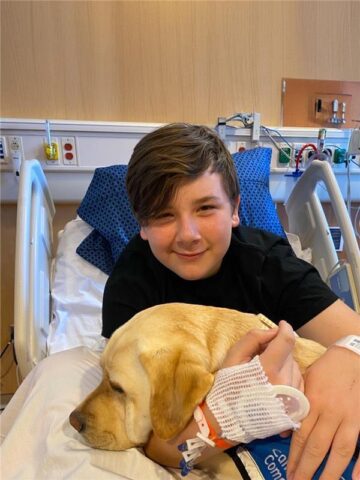We know how frightening the COVID-19 pandemic may be for parents – especially parents of immunocompromised children.
At this time, the full impact of COVID-19 on children, especially those with compromised immune systems, is unknown. However, limited information so far shows that most healthy children with the virus have done well.
Here are some recommendations for steps to take to help protect immunocompromised children from COVID-19:
Call your provider
Call your child’s care provider first if your child has a runny nose or cough. Go to the emergency department if a cough or runny nose is accompanied by fever, or if you are advised to by your doctor, or you believe the situation is emergent.
Follow through with medical appointments
If you have medical appointments that are important to your child’s care, you should attend them. Many providers are offering telehealth appointments. Call your provider’s office to see if this is available, and if your appointment can be conducted through telehealth.
Practice good handwashing
Everyone in the home should consistently wash their hands with soap and water for at least 20 seconds. This is one of the most effective ways to stop the spread of illness. If you don’t have access to soap and water, hand sanitizer is a good alternative.
Cover coughs and sneezes
Cough and sneeze into your inner elbow – and teach children to do the same. It’s also important for everyone to avoid touching their mouths, noses and eyes.
Disinfect high-touch surfaces
It is important to disinfect surfaces that are commonly touched such as the cell phones, tablets, game controllers, doorknobs, light switches, tables and counters.
Practice social distancing
Orders from the governor of California for all state residents to stay home — except for essential needs, such as if your work supports the continuity of critical infrastructure sectors, or if you need to access essential services like food, pharmacies, banks or laundromats – are in place until further notice. Read more here.
If you must leave your home, wear a mask and maintain at least 6 feet of distance from other people whenever possible.
Follow guidance around face masks
The Centers for Disease Control and Prevention (CDC) recommends wearing cloth face coverings in public settings like grocery stores and pharmacies where social distancing measures can be difficult to maintain. These face coverings can slow the spread of COVID-19 and help people who may have the virus and do not know it from transmitting it to others. It is not necessary for children under the age of 2 to wear cloth face coverings.
The governor of California has mandated that face coverings be worn by the general public when outside the home. This applies to high-risk situations such as entering public spaces; obtaining medical attention; riding public transit; certain work settings; and while outdoors in public spaces when maintaining a physical distance of 6 feet from persons who are not members of your household is not feasible. Exemptions include children age 2 and younger; persons with a medical condition, mental health condition or disability that prevents them from wearing a face covering; the hearing impaired or those communicating with them; persons seated at restaurants while eating or drinking, provided they maintain physical distancing; and those engaged in outdoor work or recreation alone or with household members while maintaining physical distancing from others. Read the full order here.
The CDC offers guidance on how to properly wear a cloth face covering, as well as tutorials on how to make your own mask. See these resources here.
N-95 or surgical masks are not recommended for public use, as supplies are needed by healthcare workers and first responders.
Avoid non-essential travel
We recommend following the CDC’s guidance for travel.
If someone in your family has recently traveled to an area with high COVID-19 activity and is showing symptoms of respiratory illness, it is best for you and your child, immunocompromised or not, to avoid contact with the person for at least 14 days.
Maintain enough medical supplies
Ensure you have necessary medical supplies and prescription medications on hand, check levels of all your medications and let your provider know if you need refills.
This article was updated on July 16, 2020.
Get more expert health advice delivered to your inbox monthly by subscribing to the KidsHealth newsletter here.
Learn more about COVID Vaccines for Children and Teens
Get answers to your frequently asked questions – and some peace of mind – with this complete guide to COVID-19 vaccines from CHOC pediatric experts.





